
Decapping machine for Covid-19
A flexible de-capping solution for different sizes
of test tube caps used for SARS-CoV-2 diagnostics.
Covid-19 test tube decapper
To receive CAD drawings and Bom list send an e-mail to lars@kompositmekanik.se
Opensource attribution - You must give appropriate credit, provide a link
to the license, and indicate if changes were made. You may do so in any
reasonable manner, but not in any way that suggests the licensor endorses
you or your use.
Link to video:
Test tube decapping machine
This is a collaboration between Karolinska Institute and
KTH Prototype Center
Background
Opening many test tubes is both a time-consuming and laborious task. Unfortunately,
the procedure of removing the cap (de-capping) from the tube must often
be carried out manually as there are no or few automatic solutions capable
of handling a large variety of test tubes.
Benjamin Heller Sahlgren have been involved in starting the COVID-19 diagnostics
pipeline at the Karolinska Institute, where he and a fellow college has
been responsible for starting and administrating the sample reception
unit. Considering that the sample reception laboratory is the first step
in the diagnostics pipeline and thus directly handles the incoming samples,
the unit quickly identified the need for a automatic solution capable
of removing the burden of the manual de-capping step.
Since the incoming test tubes differed both in size and diameter, an automatic
de-capping solution capable of handling a large variety of tubes was required.
However, such a machine was not available on the market and thus the potential
of building a novel de-capping machine became the only feasible solution
to the problem. KTH Prototype Center was contacted, and the situation
and the requirements were explained to Lars Hässler who immediately
started the development of a novel de-capping solution. The result was
a machine flexible enough to remove almost all kinds of caps that differ
not only in size and diameter but also design.
Machine designe
Lars Hässler larhas@kth.se / lars@kompositmekanik.se
www.kthprototypecenter.com/ / www.kompositmekanik.se/
Covid-19 testing
Benjamin Heller Sahlgren: benjamin.heller.sahlgren@ki.se
https://ki.se/en/mbb/ulf-eriksson-group
In the BOM list, you can find everything about materials
and manufacturing for a test tube opening machine.
Photo / film Lars Hässler and Benjamin Heller Sahlgren
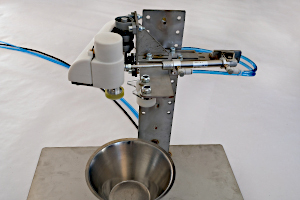
(Fig. 2) Insert the test tube between the two non-drive rollers
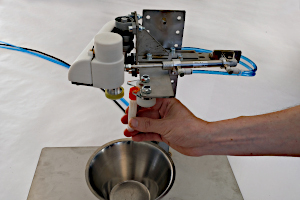
(Fig. 3) Press down the foot pedal, the arm with the motor and the drive
roller
move towards the test tube and the engine starts.

(Fig. 3) The cork is swirled from the test tube and the cork with swab
remains in place.
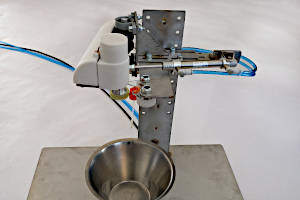
(Fig. 4) Remove the test tube without swab loosening and place it in
the test tube rack.
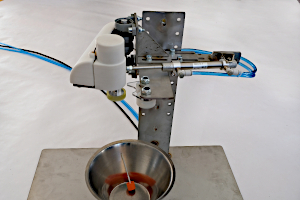
(Fig. 5) Release the foot pedal and the cork and swab falling into the
garbage container
and the machine goes to sleep / start position control:

The drive wheel pressure against the test tube is adjusted by raising
the pressure from the pressure regulator
(Fig. air pressure gauge)
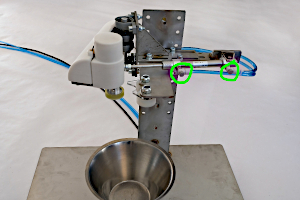
Arm speed in / out is controlled with the two small gray knobs (Fig.
6)
When the arm is in the open / rest position, the microswitch is pressed
and the motor receives no current.

Some more illustrations

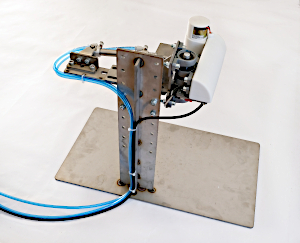
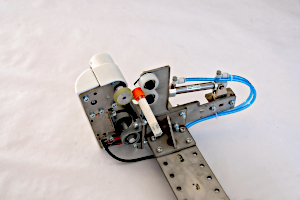
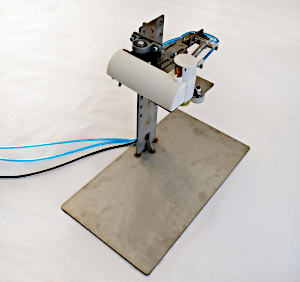
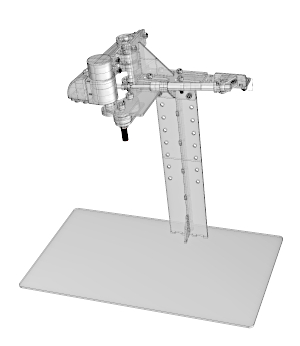
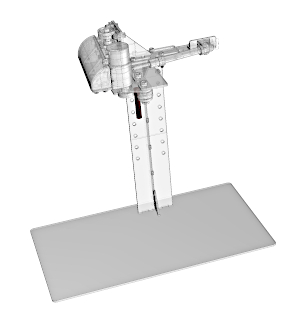


Collaboration between Karolinska
Institutet and KTH Prototype Center
www.kthprototypecenter.com
https://ki.se/en/mbb/ulf-eriksson-group

